
Menu
Menu
Direct mail is having a moment—and not just because digital fatigue is real. It's because the brands using it well are treating it as more than paper and postage. They’re treating it as a channel—one that deserves strategy, creativity, and the sort of iterative investment that improves results over time.
If you're applying the "we do this because it's always worked" approach and haven't given your process a scrub, you may be leaving savings, data insights and better results on the table. Our 2025 Direct Mail Optimization Guide offers a systematic overview of how our most successful mail clients approach the channel—from early planning to in-hand impact.
Here’s a look at some of what’s inside—and how it can shift the way you think about print.
We get it. It’s tempting to jump into design or pick a format because it’s what you used last year. But a few small decisions—made early—can dramatically affect how much you spend and how well your message performs.
That’s why we recommend a planning model that works like PEMDAS for direct mail:
Plan: Define your audience, goals, format and targeted USPS savings
Engage: Build design and copy that connects
Mail List: Segment, clean, and identify personalization opportunities
Deliver: Print and mail with precise timing and USPS incentives secured
Analyze: Track response and attribute results
Scale: Refine your campaign and expand from there
This order matters. When you loop in your printer and mail partner at the start, you unlock better pricing, better targeting, and fewer surprises down the line.
Letters, postcards, booklets, self-mailers, flats and dimensional mail…there’s no shortage of ways to get your message into someone’s hands. But the right format depends on more than preference.
Factors like machineability (both in production and mail processing), weight thresholds, aspect ratios, and flap orientation can all affect your budget and deliverability. Knowing these specifications and discount opportunities before creative begins enables your team (or ours) to target them.
Our guide breaks down USPS specs for each format, with quick-reference charts and real-world insights to help you choose the right mailpiece for the job.
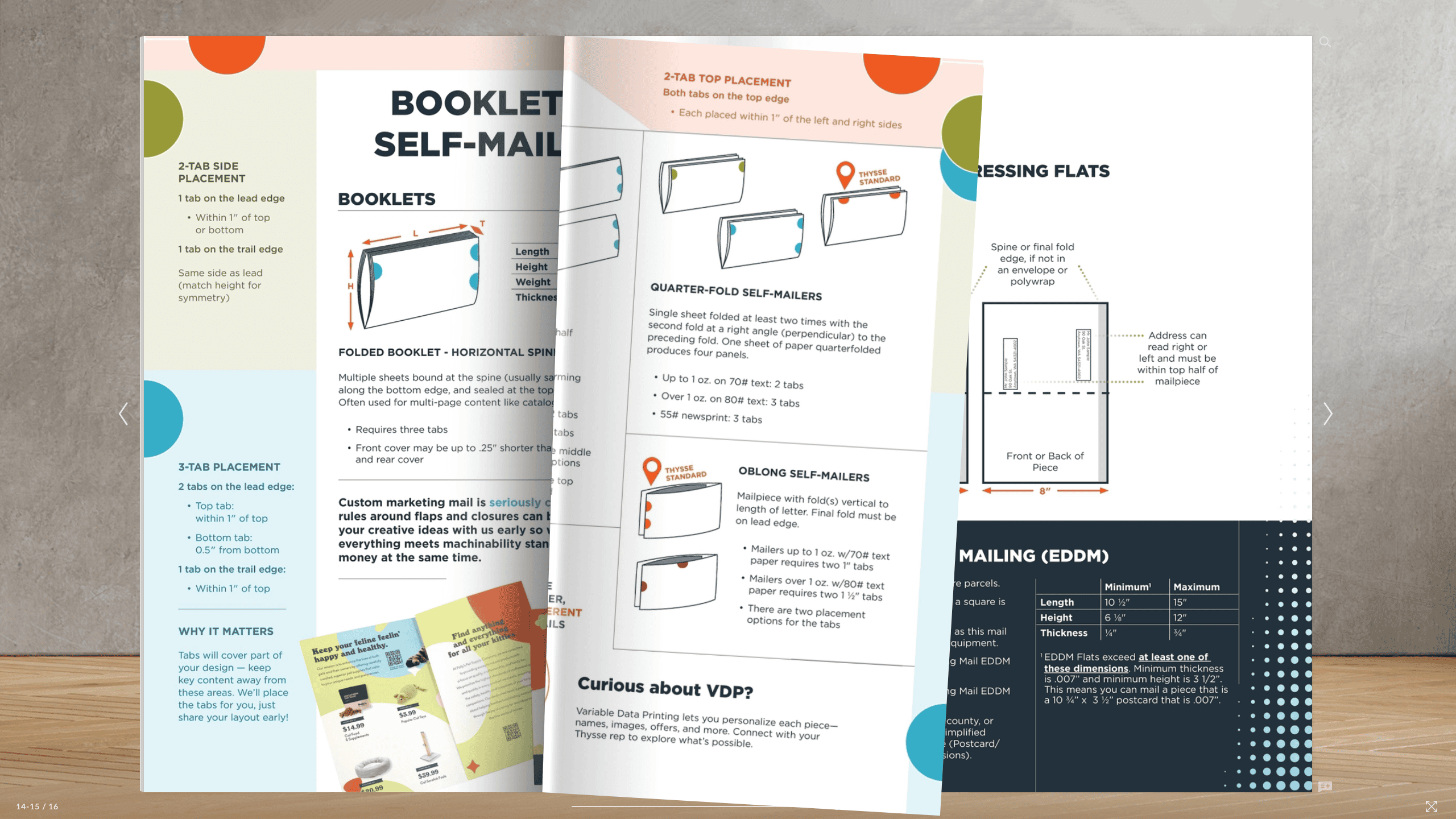
Today’s audiences expect relevance. Variable Data Printing (VDP) lets you personalize each piece with names, images, local references, or offers based on data you already have. And, personalization opens up tracking and attribution enhancements.
Whether you’re personalizing headlines, adding location-specific imagery, or offering individual-specific incentive codes, we make it seamless. It’s not just for postcards—letters and flats can be personalized too, unlocking better engagement and valuable data insights.
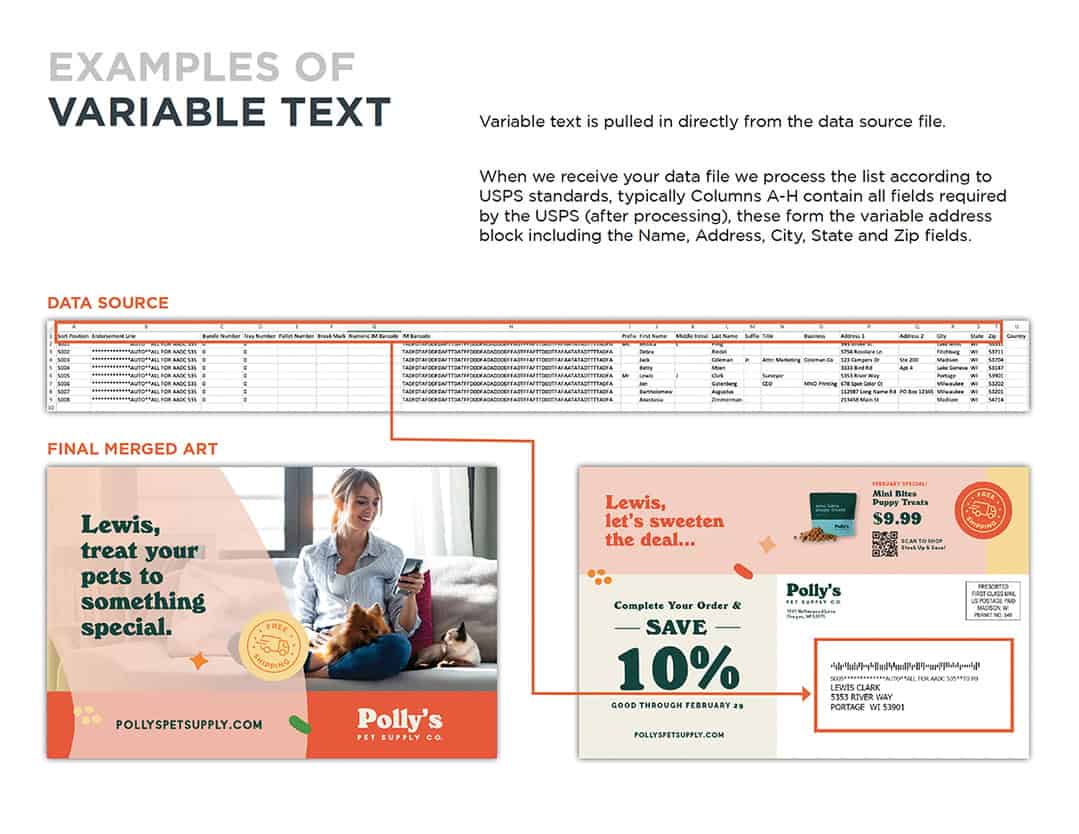
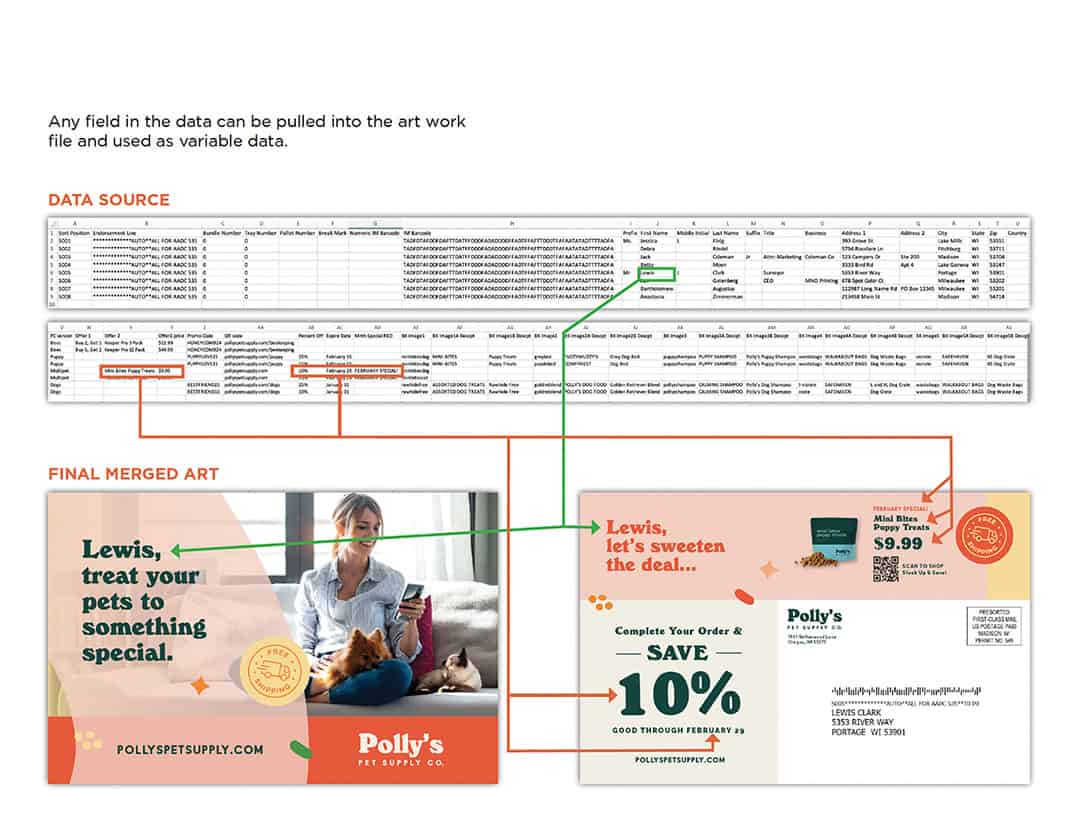
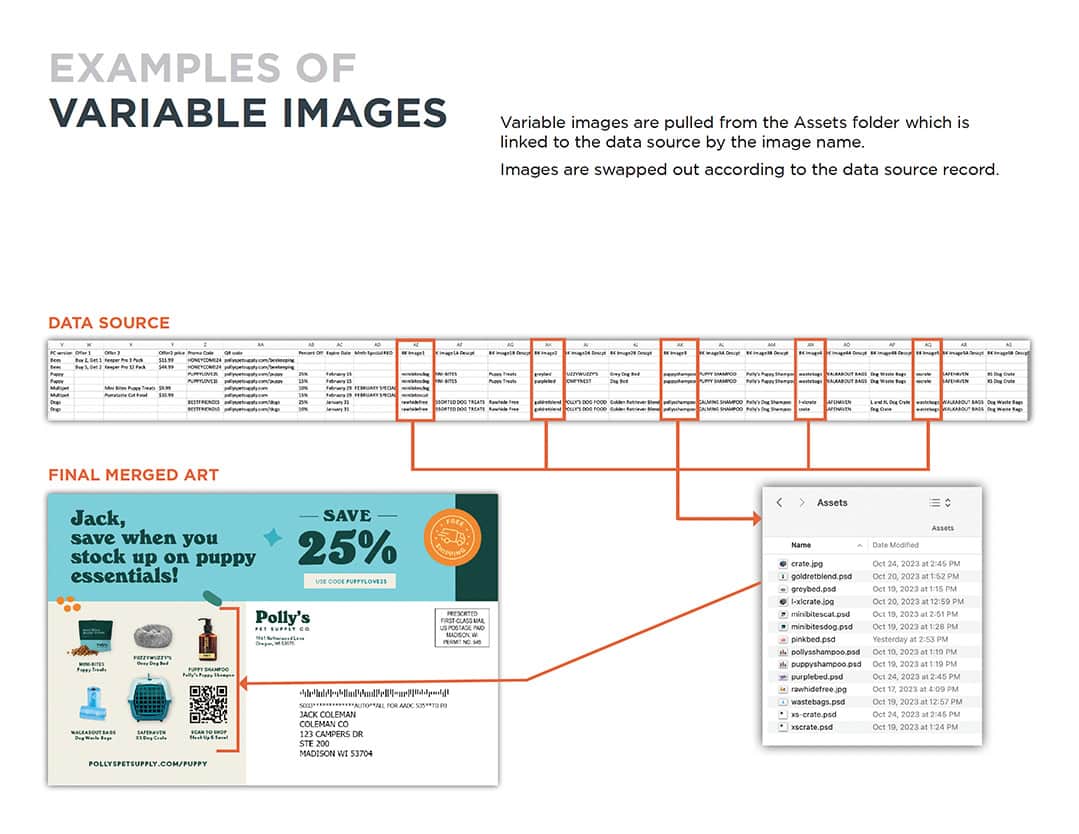
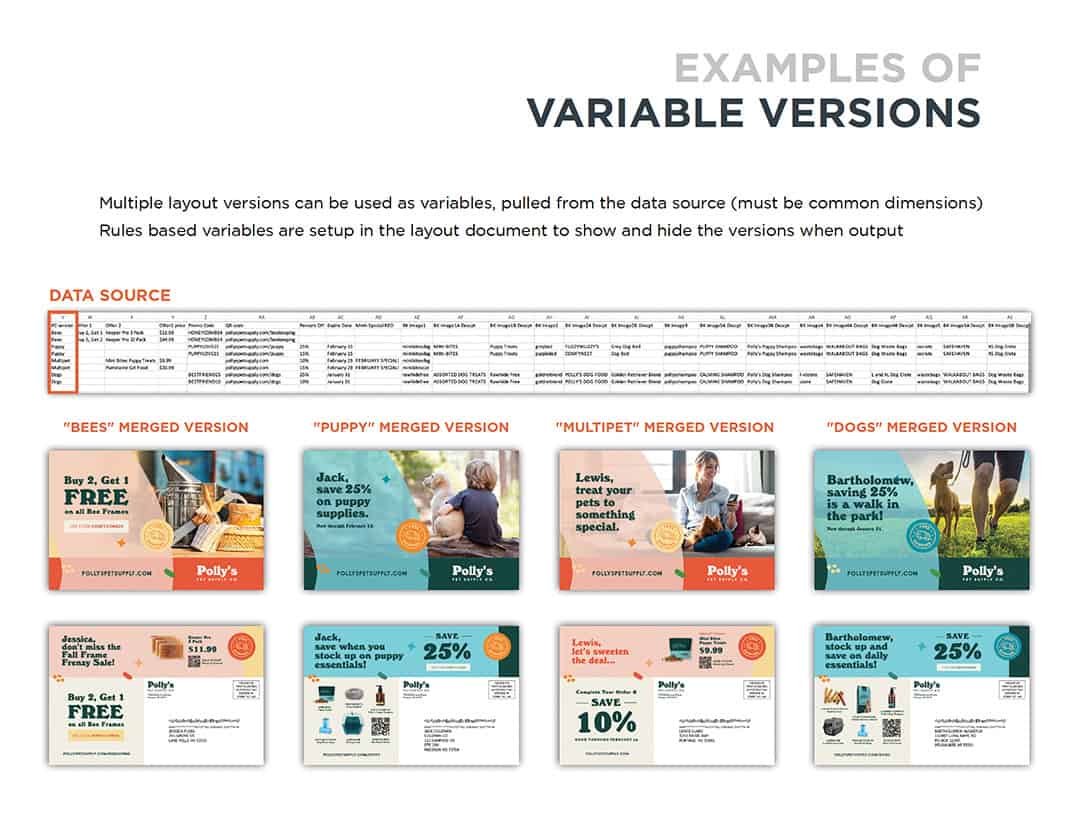
Design shouldn’t take a back seat to postal regulations—but it should know the rules. Creative touches like metallic ink, specialty folds, and interactive elements don’t have to get in the way of automation or savings. In fact, many qualify for USPS incentives.
Our team helps clients push creative boundaries without sacrificing efficiency. That includes double-checking tab placement, fold strategy, and material weight before it’s too late to adjust.
The USPS offers a rotating list of discounts—some are automatic and retroactive, some require pre-enrollment within windows. For 2025, that includes:
Tactile, Sensory & Interactive Mail (4% discount)
Catalogs with product listings (10% discount)
Continuous Contact campaigns (3% discount)
Informed Delivery add-ons (1% discount)
Thysse helps you align your campaign with the right promotion and submit any required documentation. The savings add up—and can make a real difference.
Direct mail works best when it’s part of a larger, coordinated effort. The difference between “multichannel” and “omnichannel” is coordination. Omnichannel marketing is coordinated—campaign interactions determine what happens next, when and why.
Thysse helps clients develop and manage mail data so that it can flow across omnichannel marketing efforts. Custom dashboards and reports offer precise delivery insights and individual-specific actions, like offer redemptions and website visits. We can help you split test, version and carry personalized experiences from page to landing page.
We have the tools, technology and expertise to help you optimize and scale your offline communications—and leverage them in true omnichannel campaigns.
Direct mail can feel like a maze of postal rates, paper weights, and USPS rules. But it doesn’t have to. Thysse’s team of experts brings decades of experience in printing, logistics, creative production, and USPS compliance—all under one roof.
As Business Development Manager and mail expert Julie Ehrke says, “The earlier we’re involved, the more value we can offer.”
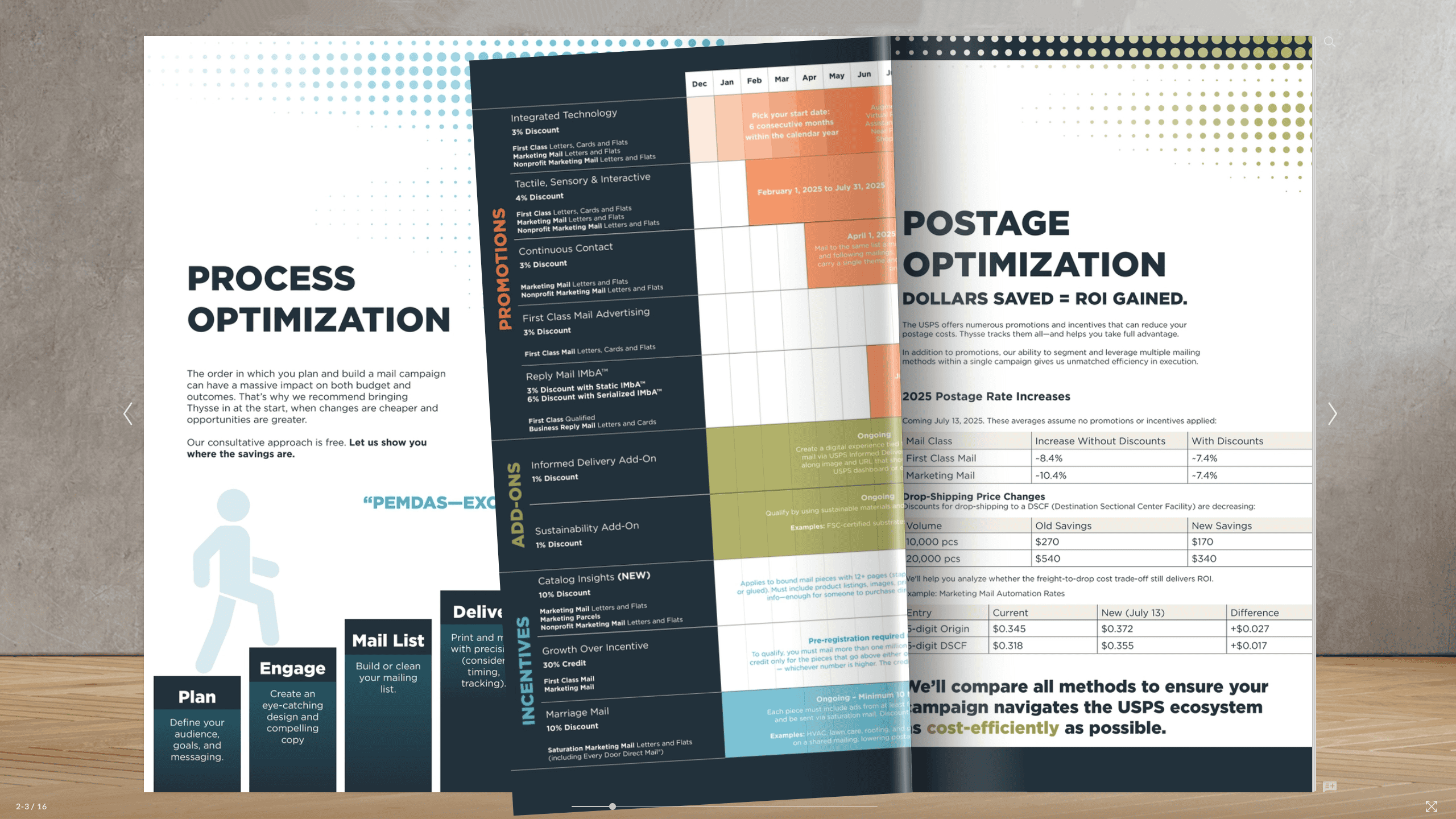
Download the full 2025 Direct Mail Optimization Guide and see how small shifts can make a big difference. Whether you’re refining an existing program or starting fresh, we’d love to help you get better results.